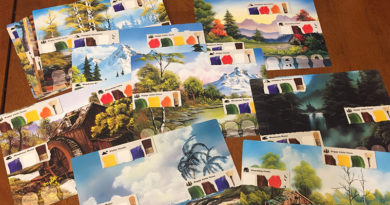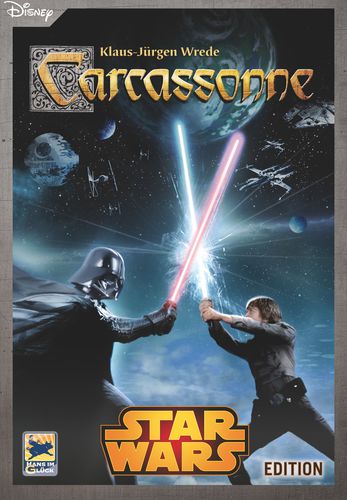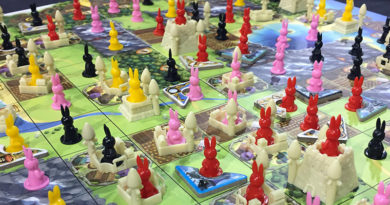Museum Suspects board game review
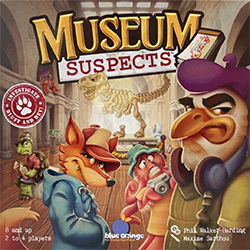
As you stand there admiring “The Night Watch” by your favorite 17th century artist, Rembrandt van Rijn, you notice a commotion occurring near the statues display a few rooms over. A minute later you hear the shrill ringing of the museum alarm and see guards racing in from every direction. Next thing you know, you and many other museum patrons are being questioned by the local authorities about a priceless sculpture that has been stolen from the museum moments before.
In Museum Suspects, by designer Phil Walker-Harding and publisher Blue Orange Games, you take on the role of a detective sifting through a multitude of museum attendees and clues in order to figure out who the thief or thieves are.
The player who hedges their bets the best may wind up working for Scotland Yard some day and will definitely win the game.
How to play Museum Suspects
Setup:
Shuffle the stack of 24 Suspects tiles and draw 16 of them. Arrange the tiles in a 4 x 4 grid to create Rooms. Return the remaining tiles to the box as they will not be used in this game. Place the Emergency Exit tile near the grid.
Next shuffle each of the 8 Clue card decks and draw 1 card from each deck. Shuffle the 8 clue cards together and place 1 card to the left side of each row and 1 card to the right side of each row face down. Return the remaining clue cards to the box as they will not be used in this game.
Each player takes a notebook and pencil along with 1 Detective token and the accompanying 12 Investigation tokens.
With that, players are ready to play Museum Suspects.
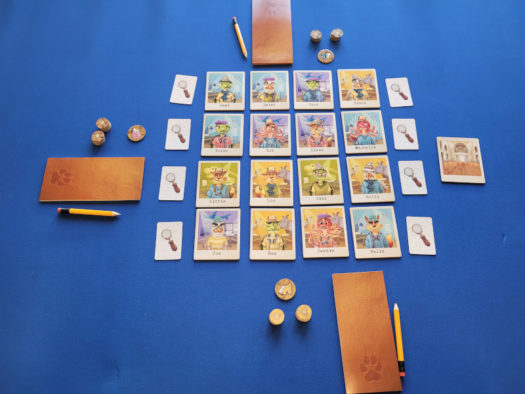
Game Play:
Museum Suspects is played over 6 rounds in which each player will do the following 2 actions on their turn:
- Investigate a clue
- Suggest a suspect
To investigate a clue the current player chooses one of the 8 facedown Clue cards to look at secretively. A player may not look at a clue that has an Investigation token already on it IF they do not have an Investigation token of their own in reserve with the same or higher value.
In the player’s notebook, they cross out the clue they just found and mark off the Rooms that correspond to the clue they just looked at.
Note: the clues indicate innocent suspects not guilty ones. Players are eliminating suspects with this process.
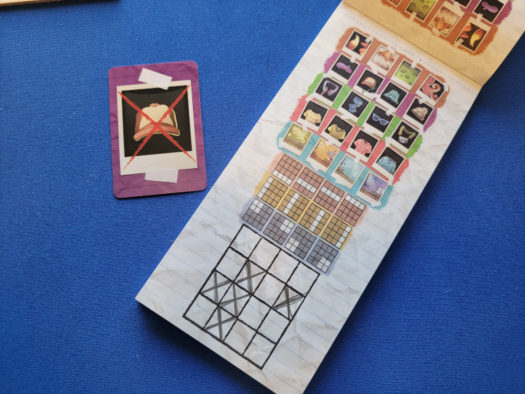
Once a player has looked at a clue card, they put it back and place one of their Investigation tokens on it face up. If there was an investigation token already on the Clue card, the player must place one of their Investigation tokens on it of the same or higher value. If not, they can choose any of their Investigation tokens to place on it.
To suggest a suspect the current player places one of their Investigation tokens face down on one of the 16 Suspect tiles or the Emergency Exit tile if they think everyone is innocent. These facedown tokens will provide the players with points at the end of the game if they’ve guessed correctly.
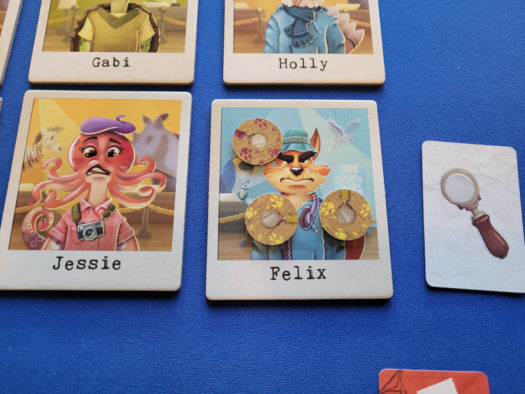
Game End:
Once all players have played 6 turns and have placed their 12 Investigation tokens, the game ends.
Players then start revealing the Clue cards one-at-a-time and remove any Suspect tiles that are indicated by the Clue cards. You can also turn over the Suspect tiles. Any Investigation tokens on these tiles are removed from the game. Once all the clues have been revealed, there are 3 possible outcomes.
- One suspect remains face up. This is the thief and players with Investigation tokens on this tile add up all their points from their investigation tokens. The player with the most points wins.
- All Suspect tiles have been flipped over meaning the thief has gotten away. In this case, players with tokens on the Emergency Exit tile add up all their points. The player with the most points wins.
- Finally, if there are several Suspect tiles face up it means there is more than one thief. In this case, all of the player’s tokens on the face up suspects are totaled and each player receives 1 extra point for each correct suspect that they have Investigation tokens on. The player with the highest point total wins.
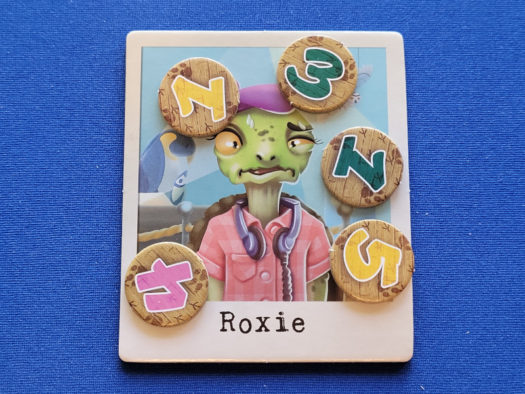
The Breakdown of Museum Suspects
Museum Suspects is a fun press-your-luck deduction game that’s fun for the whole family.
There are some mechanics and elements which will feel familiar to players of Clue, 5 Minute Mystery and Detective Club. However, the game still plays very differently than these other deduction games.
Theme and Mechanics:
The theme and mechanics merge well with one another. Looking at hidden information and placing “bets” on the Suspect tiles fits well for a detective themed game.
In fact, I really like the mechanics of this game in general. However, there is one element that I don’t understand and therefore don’t like – and that’s players placing Investigation Tokens on the Clue Cards after looking at them.
I believe this is meant to make it harder for people to look at certain clues throughout the game. But that doesn’t end up being the case. In fact, in all our games, players would play their lower value Investigation tokens first–working up to their larger ones later in the game. Which makes sense as you have more information to work with towards the end of the game.
In this case, most clues would have value 2, 3 and 4 Investigation tokens on them after the first 3 to 4 rounds. If a player placed their 6 value Investigation token on a clue to begin with, they might keep someone from looking at that clue at first, but they’re also killing scoring opportunities for themselves in the end. Again, I couldn’t see the logic in it, but that doesn’t mean someone else won’t.
This is not a game killer. You can implement house rules to overcome this issue or play as is and not worry much about that aspect.
Flow and accessibility:
The flow of this game is super smooth.
Players look at clues, write in their notebooks, and place their Investigation tokens.
All of this can happen pretty quickly and I haven’t noticed any analysis paralysis. We actually found we could play several games in a row and add up our score from all the games. This helped with end-of-game ties or situations where everyone was wrong and scored zero points–which has happened a few times.
My entire family was able to play, from 8 up, which matches the publisher’s recommendations. This is an easy game to learn and easy to teach to new players. Museum Suspects can easily fit into the “gateway game” or “filler game” category.
Production Value:
As with all Blue Orange Games titles, the production value is solid. All the components are well made and of course I love the box insert.
We all loved the artwork. It reminded us a lot of 5 Minute Mystery, but that didn’t bother us at all since we like that game too. It’s fun and playful while being practical for the purpose of figuring out clues.
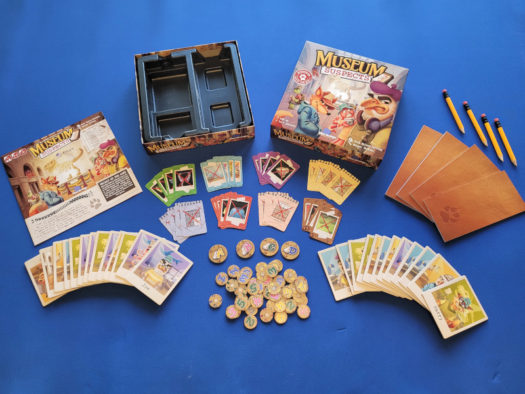
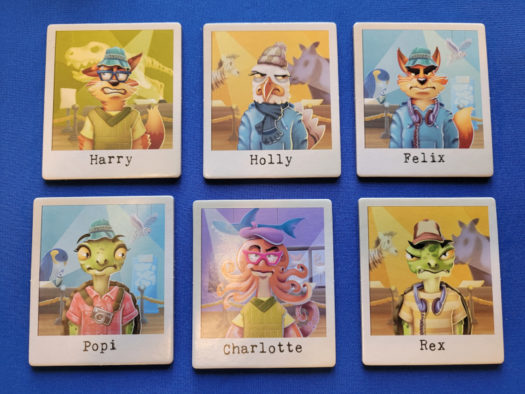
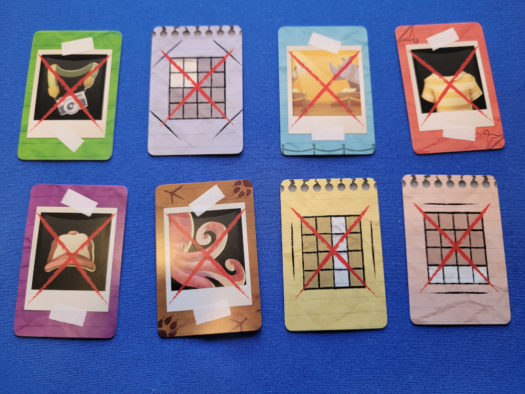
How does Museum Suspects score on our “Let’s Play Again” game meter?
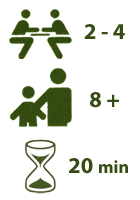 We give Museum Suspects a 7 out of 10 on our “Let’s Play Again” game meter.
We give Museum Suspects a 7 out of 10 on our “Let’s Play Again” game meter.
It’s a fast, easy game to get to the table and play. The only reason it doesn’t score a little higher is the mechanic I mentioned earlier. I think if I can find a good house rule for it, the score will go up. For gateway game fans and those looking for a quick, fun play, Museum Suspects is a good buy, especially for the $15-$25 price tag.
This brings me to one last thought unrelated to this review. I appreciate Blue Orange Games keeping their titles affordable amidst the surge in game prices that we’ve been seeing lately. There’s no one thing to blame for that, but it’s good to see that you can still get a good family board game at a decent price.
About the Author
Dane is an Advertising and Layout Manager for a national magazine by day and a husband, father of four, and board gamer by night. He has a passion for board games and believes board games help bring families closer together while providing kids a unique way to learn many diverse skills. And he thinks they’re downright fun!!!
We’d like to thank Blue Orange Games for a review copy of Museum Suspects.



